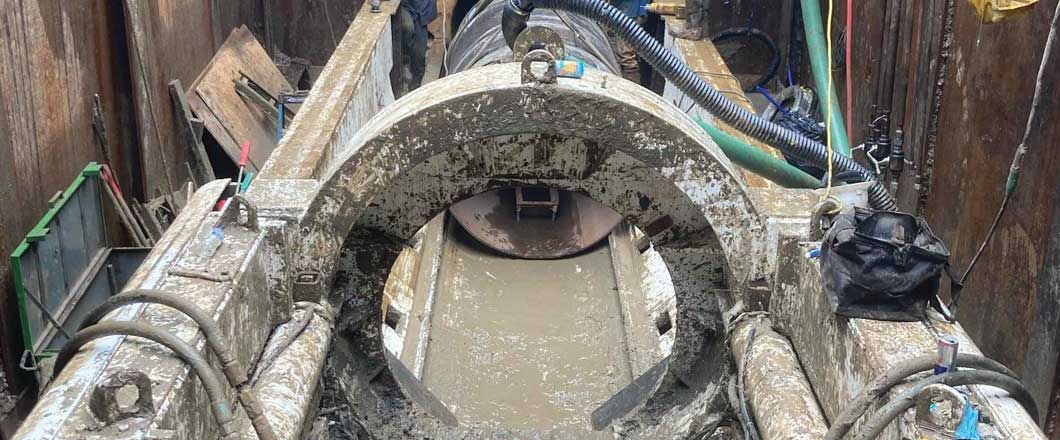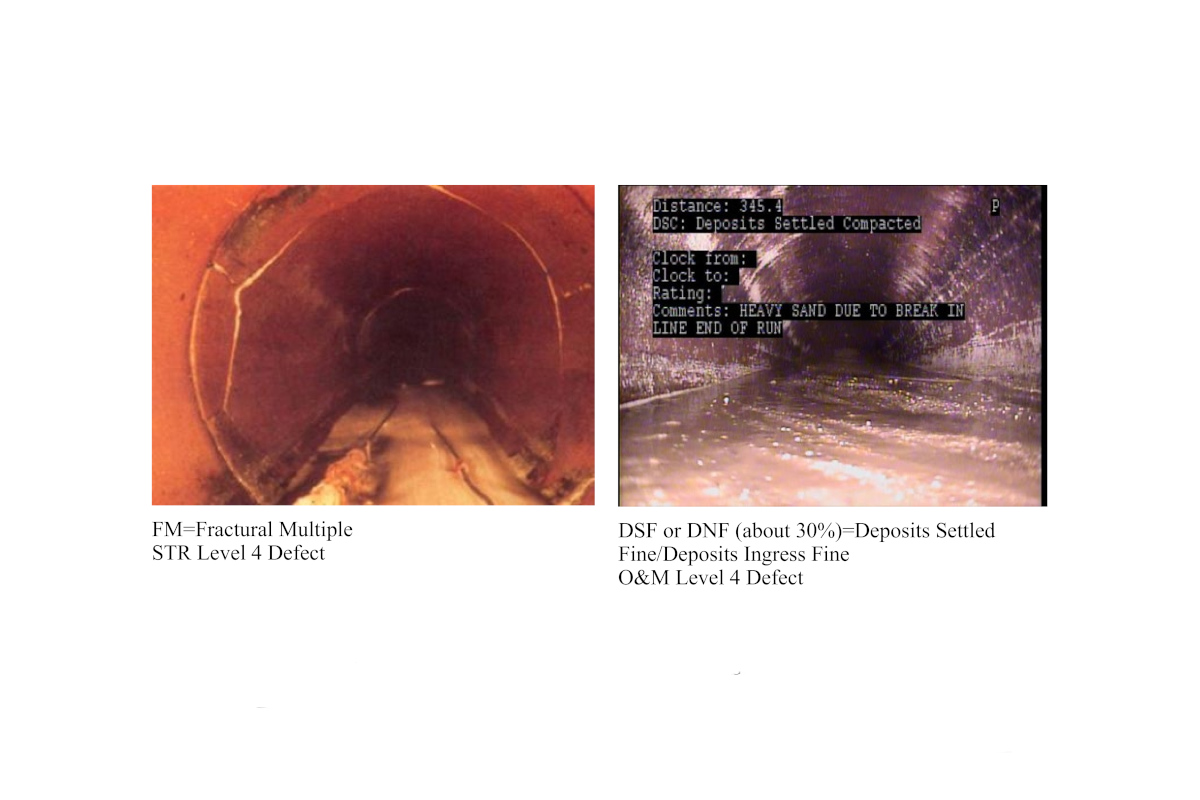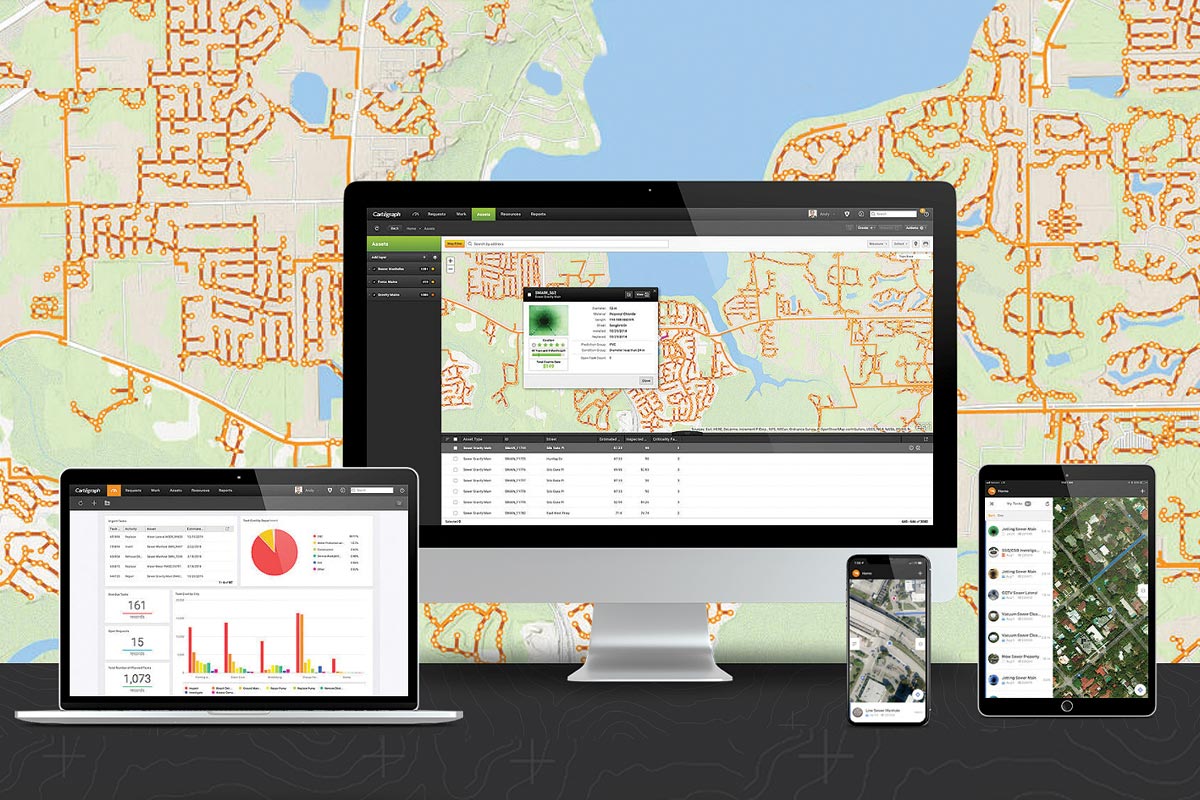
Trenchless Technologies to Install Lower Conner Creek Interceptor
The Lower Connor Creek Interceptor project involved installing more than 12,500 lf of 36-in. gravity sewer and more than 5,000 lf of 16-in. force main for the Unified Government of Wyandotte County and Kansas City, Kansas. Trenchless construction was required for 2,600 lf of the project. Three trenchless methods were used, including: 640 lf of soft ground TBM pipe jacking with steel casing; 1,300 lf rock tunneling with ribs and board; and multiple pilot-tube guided auger bores with steel casing totaling 640 lf.
The use of multiple trenchless construction methods addressed a variety of mixed ground conditions, right-of-way issues and installation sizes, making the project both unique and challenging. Collaboration between the primary stakeholders was essential in proactively identifying risks, developing solutions to minimize or avoid these risks altogether, and streamlining the installation of the critical infrastructure.
The contract was bid in January 2020 and was awarded to Rodriguez Mechanical Contractors, Kansas City, Kansas, with the trenchless work subcontracted to a collaboration of Iowa Trenchless, Panora, Iowa, and Midwest Mole, Greenfield, Indiana.
Before the work began, open-communication and teamwork between the project owner, engineer, prime and subcontractors was essential in identifying the need for additional geotechnical exploration, and then obtaining the additional information to better define the right trenchless methods for each respective portion of the project’s success.
At bid time, it was anticipated that both the soft ground and rock tunnels would be challenging and risky. The soft ground tunnel was depicted to be in soft, wet granular soils directly underlain by solid bedrock; and the rock tunnel was placed just into the bedrock stratum overlain by the same wet, granular material.
Due to the nature and location of the dirt-rock interface, each trenchless crossing had a heightened possibility of encountering a mixed-ground condition. It was because of this that the project stakeholders undertook several rounds of additional subsurface exploration along both alignments until a plan was developed.
This communication and the additional geotech work proved to be paramount to the success of each crossing, which were completed in summer 2021.
“Because we were dealing with soft ground and hard rock alignments both close to the interface, we decided to do multiple rounds of exploration. The collaboration between the design and construction team resulted in a cohesive team all pulling toward the same goal,” said Jay Klein, Iowa Trenchless.
Tunnel A – Soft Ground – 640 ft of 59.5-in. Steel Casing
The added subsurface investigation discovered a bedrock knoll between the start and ending points of soft ground Tunnel A. If gone undiscovered, this would have been detrimental to the tunnel installation.
The new information allowed the project team to re-evaluate the crossing, leading to realignment and lengthening – from 570 ft to 640 ft – of the already long (by industry standards) pipe jack in order to comply with Kansas DOT Interstate requirements and avoid the bedrock all while maintaining necessary elevation and grade requirements.
The new crossing design of Tunnel A was completed with an Akkerman 480 TBM with a closed-face cutterhead. Iowa Trenchless elected to use 59.5-in. OD Permalok steel casing as the initial tunnel liner and pushed with a 1,200-ton hydraulic jacking frame. The selection of interlocking steel casing pipe was important in achieving production rates as high as 60 ft per shift, averaging 35 ft per shift overall. Lubrication of the tunnel was also a key factor in the successful installation of the tunnel, resulting in no intermediate jacking stations being activated throughout the entire 640-ft push.
Tunnel B – Rock – 1,300 ft of 67.25-in. Beam & Lagging
Rock Tunnel B was designed to be installed in interbedded limestone and shale bedrock, however little was known about the quality and characteristic of the rock. Again, communication and the additional geotechnical work identified hard, consistent, quality limestone strata throughout. This led to the decision to utilize a custom-built 66-in. TBM that was heavily modified to optimize penetration rates in the solid rock.
Midwest Mole utilized steel ring beam and wood lagging as the tunnel liner. Sets were built behind the TBM and expanded to match the 67.25-in. cut diameter of the cutterhead. The decision to select this segmented tunnel lining approach was key to the success, as it significantly reduced the jacking forces required for the 1,300-ft crossing, as well as aiding in steering the TBM since it is advanced off the installed liner immediately behind.
Tunnels A and B each housed a final product of 36-in. HOBAS CCFRMP to be used for a sanitary interceptor sewer. The final product-pipe was threaded, blocked, and grouted in place with low-density cellular concrete, placed in multiple lifts.

Guided Auger Boring of Steel Casing
Other trenchless methods used for the project included 24- and 30-in. steel casings installed utilizing an Akkerman 240A guided boring machine (GBM) and Michael Byrne and Barbco auger boring machines (ABM) to complete the trio of trenchless technologies, crossing a local highway and Class 1 railroad track.
A strong stakeholder team, communication resulting in additional geotechnical work, and the requirement of soft ground tunneling, hard rock tunneling, and guided auger boring within the confines of a single contract make this project unique.
The successful communication and collaboration by Rodriguez Mechanical, Iowa Trenchless, Midwest Mole, George Butler Associates and the Unified Government of Wyandotte County helped overcome the challenges and make the project a success.
Challenges and Innovative Solutions
Bedrock found at a higher elevation than expected conflicted with the originally designed soft ground tunnel method. Had this subsurface condition gone undiscovered and the tunnel started with a soft ground TBM, it could have been disastrous to the project, likely resulting in abandonment of the TBM and unfinished tunnel, or emergency excavation in the I-435 ROW approaching 50-ft deep. Additional permitting, significant disruption to the public, and substantial costs would have followed.
Supplementary subsurface exploration by the contractor team and open communication with the owner led to the redesigned tunneled and saved an insurmountable amount of expense and additional work.
Additionally, the combination of size, length and tolerance requirement of the rock tunnel presented its own challenge, requiring a high level of skill, expertise and knowledge.
The trenchless subcontractor team was able to interpret the rock conditions with the additional geotechnical work, and custom build the necessary TBM to successfully complete the required 1,300-ft crossing on-line and grade. The team heavily modified the cutter positioning, quantity and type to control steering and optimize penetration rates in the solid limestone, which exhibited compressive strengths exceeding 20,000 psi. As a result of this ingenuity, production rates averaged 20 ft per shift, reaching a high of 35-ft in one shift.
Benefit to the Client and Community
Despite discovered conditions that differed materially from those anticipated, the project team of owner, engineer and contractors were able to collaboratively and proactively identify project risk factors and work together to create a situation supporting successful completion of this work, maintaining forward movement of planned Wyandotte County infrastructure improvements. Overcoming the challenges to maintain trenchless construction techniques, thus minimizing impacts to the general public, was essential.
Citizens of the region rely on the infrastructure system to function flawlessly, while government officials and planning and zoning officers count on infrastructure to support future growth and quality of life.
Without the team’s collaborative effort and solutions to complete the trenchless facets of the project, this project would have been significantly delayed, had a greater impact to the daily activities of the community, and would have cost the regional government and taxpayers many times the realized expenses.
“The key theme for this project was teamwork. Iowa Trenchless and Midwest Mole both worked with us to make this project a success,” said Rodriguez Mechanical Contractors Inc. president Paul Rodriguez. “Through solid coordination and teamwork, their personnel identified the inherent challenges for a tunneling project in this location, including the use of multiple trenchless methods, unusually long tunnels, and unexpected geotechnical obstacles. By identifying the challenges early in this job, these contractors were able to collaborate with our team to creatively modify the design, into a complex — but possible — project. Their teamwork, and their staff’s industry experience, helped us to overcome challenges with a proactive, cost-effective approach, and allowed the project to be completed successfully. We were very pleased with the teamwork, cooperation and performance of the Iowa Trenchless team, and would not hesitate to hire them again on the next challenging project.”
Collaboration of the entire team, including the owner, design engineers and contractors, was paramount to the success of the project. It was because of the open communication, teamwork, proactive preparation, forethought and positive attitude by all parties that this project was able to be constructed efficiently and effectively.
Project-at-a-Glance
Project Name: Lower Conner Creek Interceptor
Project Owner: Unified Government of Wyandotte County/Kansas City, Kansas
Location: Kansas City, Kansas
Contractors: Rodriguez Mechanical Contractors (prime); Iowa Trenchless and Midwest Mole (trenchless subcontractors)
Suppliers: Akkerman Inc., Barbco Inc., Michael Byrne Mfg., Northwest Pipe/Permalok, Hobas Pipe
Engineering: George Butler Associates
Jim Rush is an editorial consultant to Trenchless Technology magazine.




